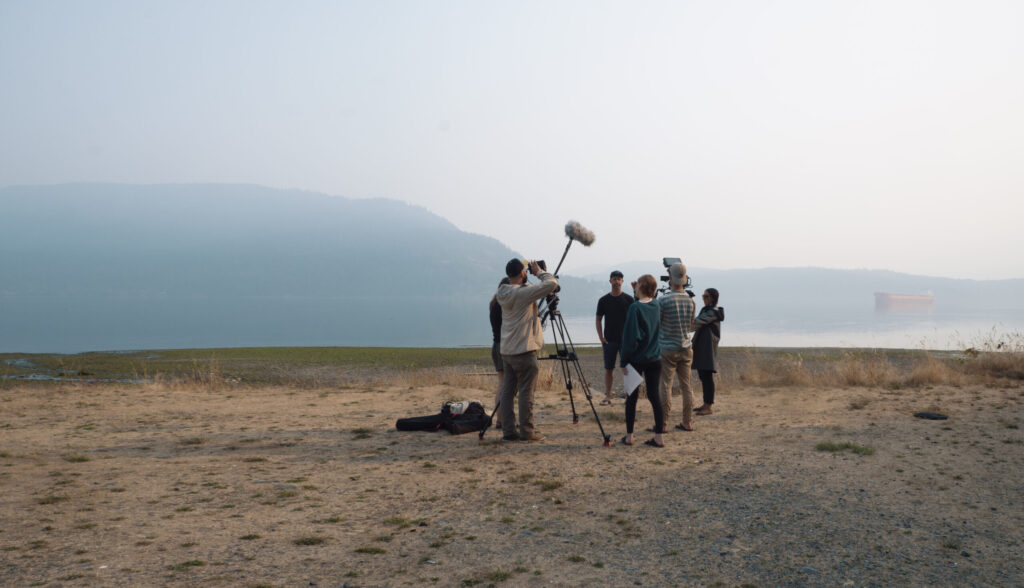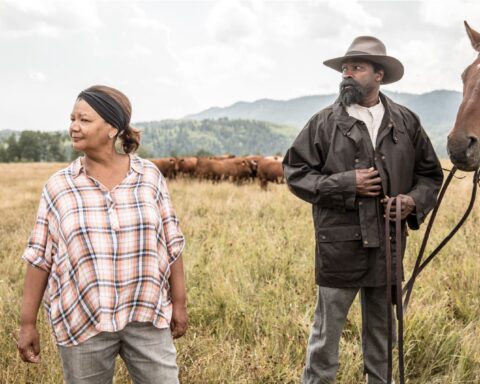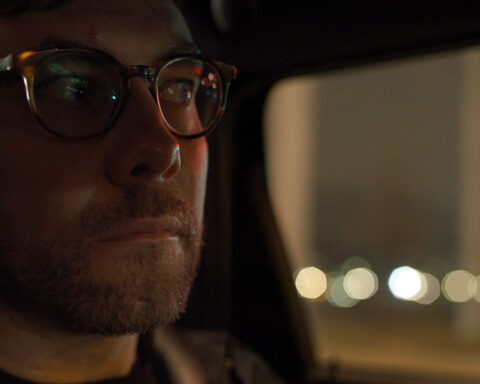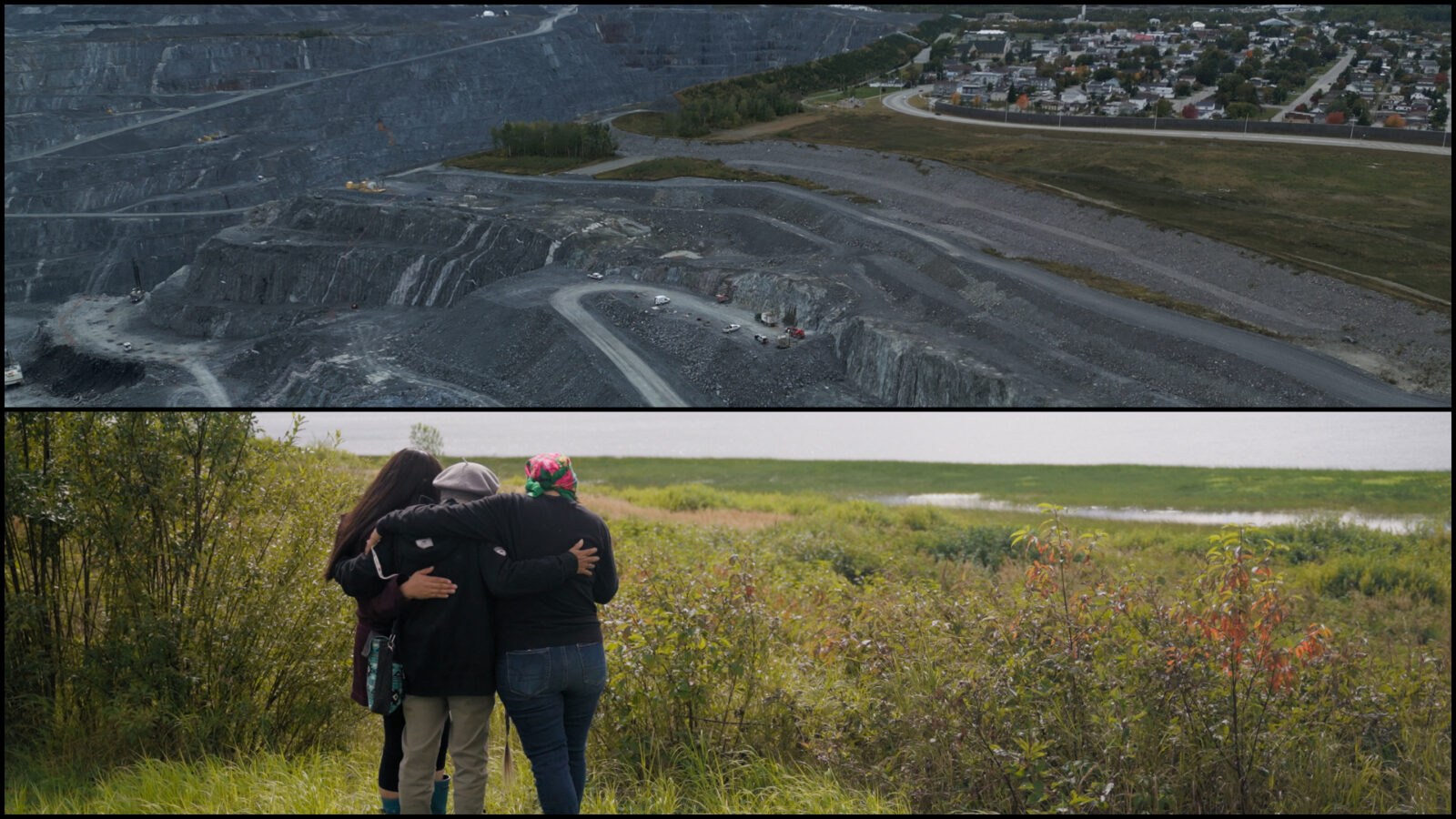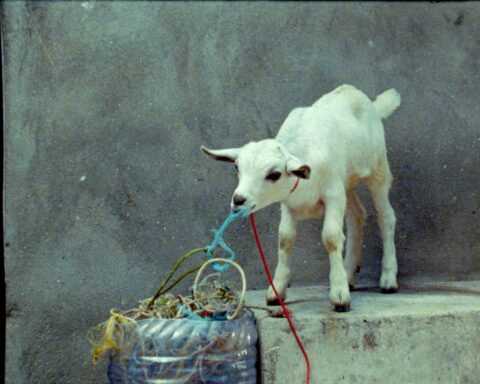Four years on from a game-changing global pandemic, members of the Ontario chapter of the Documentary Organization of Canada (DOC), the organization’s oldest and largest, find themselves in a challenging place. With inflation stinging, broadcasters downsizing, and distributors retrenching, the mood is bleak. And while one might say (if we’re being honest) that complaining about the state of the industry is perhaps a default setting for many documentarians, this, nevertheless, feels different.
The adjustment to a post-COVID “new normal” has left doc makers facing a fundamental threat to their survival, as highlighted in the DOC Institute’s recent “Breakthrough 20 Year Research Report.” In response to the question, “Are you able to sustain yourself financially in the business?” nearly three in 10 respondents (28.2%) identified themselves as “precariously holding on.” A further two in 10 (19.2%) noted they have resorted to “doing part-time work outside the business to survive.”
Such results paint a bleak picture, hinting at something most working in the industry know or feel intuitively, while simultaneously raising alarm bells: At least half of Canada’s documentarians cannot earn a living making documentaries.

“Take your pick on multiple issues,” says filmmaker and distributor Ron Mann, co-founder of Toronto-based Films We Like, “from publicly funded film festivals who do not pay screening fees to filmmakers, to the collapse of media reviewing non-Hollywood films. All contribute to an industry which is unsustainable and in crisis.
“As a film distributor, I would point to two pressing issues,” he adds, “the direct booking of films by U.S. distributors into Canada, and the decline of acquisitions by broadcasters and airlines.”
Among the Ontario filmmakers polled by POV, the most recurrent complaint has been of cost increases against flat budgets. Their comments mirror the findings of DOC’s “Getting Real” report, the seventh edition of which was published in September, which recorded significant decreases in budget ranges for both Canadian feature docs and series over the five years from 2016 to 2021.
“We went into the pandemic with three major projects at the tail end of development, and as we came out of it, they all kind of went into full production,” recalls Ngardy Conteh George, the co-founder of OYA Media Group, whose credits include Canadian Screen Award-winning CBC doc Mr. Jane and Finch (2019) and 2023 CityTV series Black Community Mixtapes.
“The challenging part was all of them had budgets created pre-pandemic,” she adds. “Now, coming out of the pandemic, everything’s 25% more expensive. People’s wages, flights, hotels, car rentals, per diems, food…everything. But our budgets were locked, the funding was allotted, and there’s no way to go back to the broadcaster to ask for more money.”
Her comments are echoed by wildlife filmmaker Nicholas Castel, whose credits include producing, shooting, and editing the orca-centred feature doc Coextinction (2021).
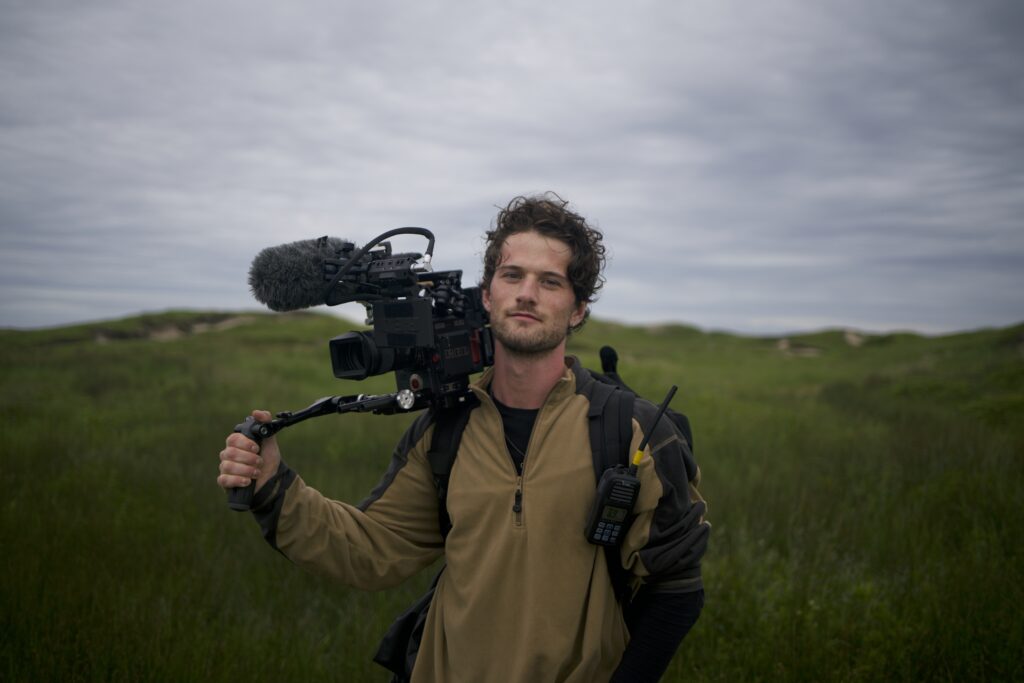
“Everything’s more expensive; that’s the overall trend,” he says. “Everyone’s day rates have gone up; everyone’s flights are more expensive. We’re having to do things like cramming people into Airbnbs, cooking all the food ourselves… anything to really try to reduce costs as much as possible.”
Beyond the cost of making documentaries, filmmakers also cite an increasing shortage of slots, strands, and commissions, resulting in fewer opportunities for their work to actually be seen, as the industry embraces the chilling grip of retrenchment.
Corus has cut roughly 15% of its workforce this year, amid a 70% drop in share price year-over-year. Streaming platform Crave’s parent company Bell Media has axed 6% of employees—some 1,300 positions—across its business. Even Netflix, once perceived as a Silicon Valley behemoth with money to burn, has announced its intention to halve the number of original films it produces, from 50 to around 25, in a year that has seen the departure of its long-serving docs head Lisa Nishimura.
“Budgets have definitely gone down,” says director and Hungry Eyes Media co-founder Jennifer Holness, whose credits include Subjects of Desire (2021) and four-part doc series BLK: An Origin Story (2022). When she made the latter series for Corus’ History channel, “it was a decent budget and they were really great,” she recalls. “A year later, we’ve seen the cuts to Corus in terms of staffing and, of course, that’s also reflected in programming.”

Castel, meanwhile, notes that Canada was one of the last territories to pick up Coextinction. “Our last film was largely based in Canada, was made here by a Canadian team, and really spoke to issues that were relevant for Canadians,” he reflects. “And yet, Canada was one of the last territories to pick up our film. CBC only just picked up the film. We were playing all over the world—in Germany, New Zealand, Australia, France—and it’s like, come on…we just want to show people in Canada the story that means the most to them.”
With the ground shifting beneath their feet, filmmakers are increasingly having to get creative, turning to international co-production, celebrity backing, and third-party fundraising to get their work made.
The number-one question on the lips of most young filmmakers, according to DOC Ontario board member and Hot Docs co-chair Lalita Krishna, is where they can take their documentaries. “Some are still making docs through arts grants and then trying to cobble together very small licenses, from Hollywood Suite or a few other places. And that’s okay for your first doc, but it’s not sustainable; you can’t be making the second and the third documentary that way.

“We’re still feeling the effects of what’s happening at Bell Media, with Crave in bad shape right now,” she adds. “The same thing with TVO. I mean, TVO is struggling in so many different ways, but they’ve completely lost their footing in terms of what they’re doing for documentaries. They’ve no idea.”
As for the CBC, she credits the success it had with CSA-winning co-production Enslaved (2020) for having a knock-on effect in terms of driving demand for attaching celebrity hosts and narrators. “When Samuel L. Jackson narrated the Enslaved series,” says Krishna, “I remember [CBC executive director for unscripted content] Jennifer Dettman saying, ‘Oh, if we can get more like that, that helps drive the numbers.’ But CBC should not be that; they are our public broadcaster.
“They’re under a huge pressure to bring in audience numbers. But once you go that route, it’s very hard to come back. It’s never going to be the public broadcaster that we knew it to be or that it is mandated to be.”
On the fundraising front, many of the filmmakers POV spoke with noted that, while Canada can at times seem generous with the funding, grants, and tax credits it offers, navigating the complex minefield of red tape and form-filling required to access such funds can be a nightmare.
“It’s a system that is very, very difficult to manoeuvre through,” says Holness. “There’s so much you have to do to get the money.” She contrasts her experience securing funding for BLK: An Origin Story with that of co-producing NFB doc Stateless (2020), directed by New York-based director Michèle Stephenson, who is Canadian and of Haitian-Panamanian descent. The latter film scored support from a slew of non-Canadian funds, including Chicken & Egg Pictures, the Sundance Documentary Film Program, Cinereach, Black Public Media, Latino Public Broadcasting, and the Gucci Tribeca Documentary Fund.
“There was so little paperwork,” Holness reflects, “and the funding we got didn’t even always have to be for the movie, it was to support the filmmaker. Whereas on our side [in Canada], some contracts would take months. When you looked at the deliverables, all the things that we would have to do, it was just so much more onerous.”
What’s needed now, according Reel to Reel Productions founder Anne Pick, whose credits include exec producing Fanny: The Right to Rock (2021), is a fundamental overhaul of our national philanthropic model for issue-based filmmaking.
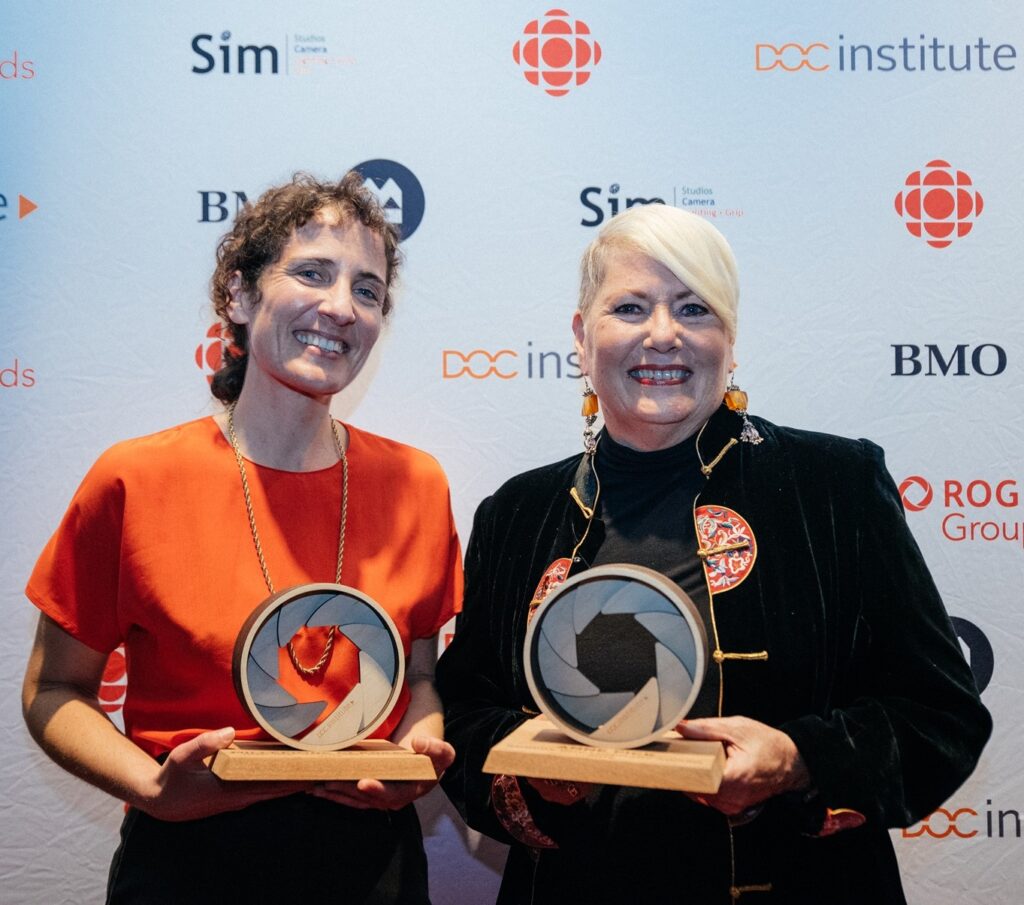
“Although we have an enviable funding system, we have not been able to develop the kind of funding that exists, for instance, in the United States with philanthropic funding: the Ford Foundation, the Macarthur Foundation…That kind of money in Canada tends to go to our hospitals, universities, and institutions. And we’ve been trying very hard over the years to build up those relationships with private benefactors, but that’s still a hill to climb.”
Aside from our fiscal challenges, the most notable shift post-pandemic has been in the attitudes of Canadian institutions toward rebalancing—or attempting to rebalance—the historical underrepresentation of BIPOC and other oft-neglected storytellers across the board.
On this front, filmmakers have noted mixed results. “There was a convergence during the pandemic with George Floyd and his murder,” reflects Holness, who is Black, “that triggered this sense of awareness about Black lives, about Black creators. We did BLK: An Origin Story with Corus and I am absolutely convinced—without a doubt—that that happened because of George Floyd and the sudden sense of, ‘Oh, we have talented Black Canadians that we haven’t really tapped.’”
That series was turned around within a year and went on to pick up five Canadian Screen Awards at this year’s ceremony, including the best direction for a doc series prize for Holness. However, across 2023, she has observed “things starting to shift back to normal.”
“There’s a return to a lot of traditional thinking about what sort of content we get to create,” she says. “So, for example, if it’s crime, or incarceration, or sexuality…those things are still seen as much more viable for broadcasters when it comes to Black-created content in the doc space.”
Her comments are echoed by Conteh George, who is also Black. “In 2021 and 2022 a lot of greenlights happened and we’re starting to see those projects come out.

“What I’m more curious about is seeing what happens after,” she reflects. “Is it going to be a wave? Are we going to go back to seeing the usual suspects making projects, or are we going to continuously see new voices, new perspectives, and diverse stories being told?”
The key question, Conteh George says, is whether underrepresented groups will gain the opportunity to own the content they create, beyond just getting the opportunity to direct. “Or is it just this blip where it’s going back to a majority of white, male-led production companies optioning work from diverse and underrepresented creators and having them as directors-for-hire?
“Maybe [giving out] an honorary executive producer position, but with ownership going back to these production companies where the system hasn’t changed. Because that’s where the power lies. That’s where the profit lies.”
Outside of gains made in diversity and representation, another area where filmmakers are feeling somewhat positive—and where the pandemic might perhaps take some dubious credit—is the evolving environment in which to discuss mental health. Stress, depression and fatigue—once no-go areas for discussion in the hard-hitting realm of film and TV—are now being more widely discussed. People are being a little kinder to themselves, perhaps.
“Burnout culture, specifically in our industry, is very real,” say Tiffany Hsiung, a DOC Ontario board member whose films include 2020 CSA winner Sing Me a Lullaby and 2016 Peabody winner The Apology.
“The majority of us would die for our film. And I’m not saying people deliberately take advantage of that passion, but it’s no surprise that people will do things like earn below minimum wage [to get a film made].”
If the pandemic has taught us anything, it has been how much we have to look at our own well-being before we can address supporting and sharing other people’s stories as documentarians, Hsiung adds. “Our responsibility is to be the keepers of other people’s stories. And if we aren’t healthy, how are we going to create the best work that we can?”
One possible pathway is through mentorship—not just offering advice on how to make one’s first short or feature, but helping generate sustainable career development.
“Post-George Floyd, there was a sense of everyone really wanting to find a way to immediately make change to support more BIPOC storytellers in our industry,” Hsiung says. “‘We’re going to create this fund,’ or ‘We’re going to have more BIPOC people on set,’ without thinking, ‘How do we make sure that we do not set up these emerging BIPOC filmmakers for failure? How do we support their process, not just in making this film, but the career aspect?’

“We should be talking about how to position yourself for your next film when you’re still making your first film,” she adds. “These are the conscious things that not many people have the luxury to think about, because they’re struggling doing five fucking jobs [on their film]. And why are they doing five? Because the budgets won’t allow us to properly pay people.”
The challenges on the horizon are considerable. DOC’s 40th anniversary coincides with an industry in transition and a world in turmoil. But those issues offer an opportunity to envisage a better future for Canadian documentarians from all backgrounds.
“I do have faith in our industry to keep moving forward in a way of correcting these inequalities,” offers Conteh George, “and I’m curious to see if a lot of the changes in the past three years are band-aid versus systemic.”
Hsiung agrees. “40 years from now, where are we? Any change is scary, but we have to be on the right side of things. We have to make sure the process is ethical, so we’ll still be able to share the voices of the vulnerable, of those who otherwise aren’t able to get their stories out there.”
For more perspectives on the state of documentary filmmaking across Canada, read more about the Winnipeg scene, plus Quebec, Alberta, B.C., and Atlantic Canada in issue 120.




